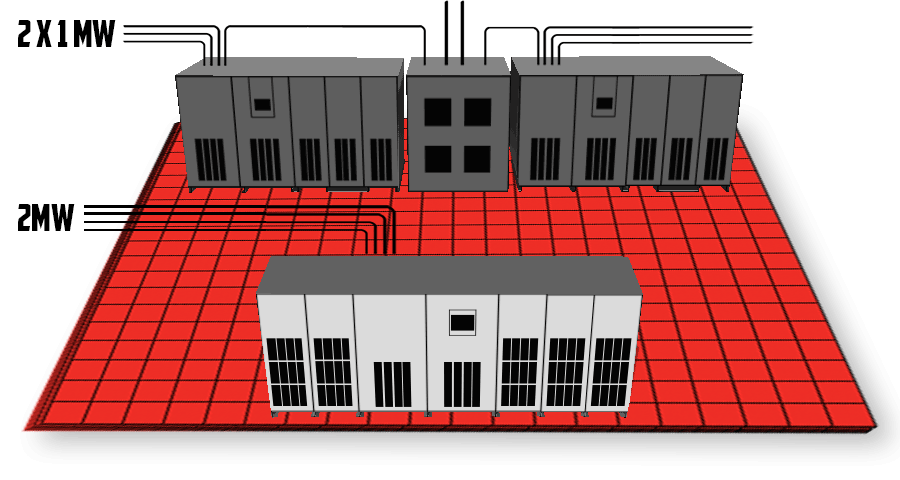Blog
Blog
Is your data center's power design costing you extra money?
JULY 1, 2021
 |
by Dakota Massey, National Accounts Management Manager |
There is a very common theme in the data center industry right now, and it's a huge opportunity for a simple design change that lowers CapEx, OpEx, and TCO - all at the same time. It simplifies installation, decreases footprint, improves cooling efficiency, and costs you less money. Sounds too good to be true, right?
Many data centers are standardizing their power deployments on a 2 x 1MW paralleled capacity system. This creates a few challenges that come with extra expense and stress.
What is wrong with the 2 x 1MW design?
- Paralleled UPS systems are complex installations. Ask your electrical engineer or electrician how they would feel if they no longer had to deal with the challenge of balancing the load? Spoiler alert: they will be thrilled.
- Your 2 x 1 MW system is taking up unnecessary space. It doesn’t matter if you are putting your power room inside the building on a pad, on a skid, or in a container outside your data center - real estate is valuable. And this isn’t just a few inches: try several feet. If you are using VRLA batteries, there’s about another 15 feet of footprint reduction.
- The 2 x 1MW design is expensive. You have extra cable for balancing the load and extra labor for that stress mentioned above. You need paralleling gear and the cables for MMS communication. You are installing and commissioning two units per deployment. Cooling requirements are higher. Are you replacing your fans or capacitors every 3-8 years? These costs add up.
So, what is the alternative? Mitsubishi Electric offers a 2MW static UPS, the 9900D.

The 9900D has a smaller footprint (two-thirds that of the competition) and higher power density than your 2 x 1 MW system, along with ten-year fans and 15-year capacitors for lower OpEx.
Your installer doesn’t have that headache of paralleling, and they are only installing one UPS. Make sure they change their scope to give you a cost savings. Your commissioning process is faster, simplified, and less costly with one static unit.
Let’s discuss these ideas further and put together an accurate analysis of how a simple change on your power design can save you money.
Stay up-to-date on industry trends & insights
Be the first notified of new blog posts
By submitting this contact form, you agree that a representative(s) of Mitsubishi Electric Power Products, Inc. (MEPPI) may contact you using the information you provided. In accordance with our Privacy Policy, we will never share or sell your personal data.